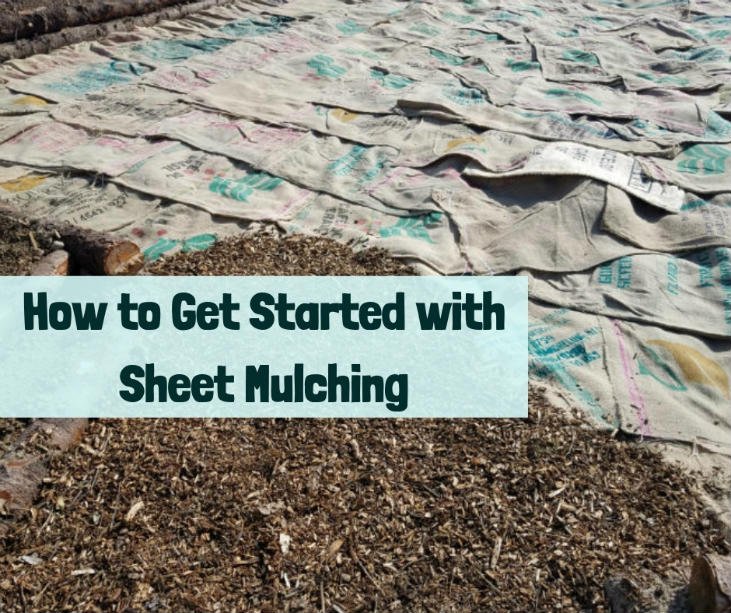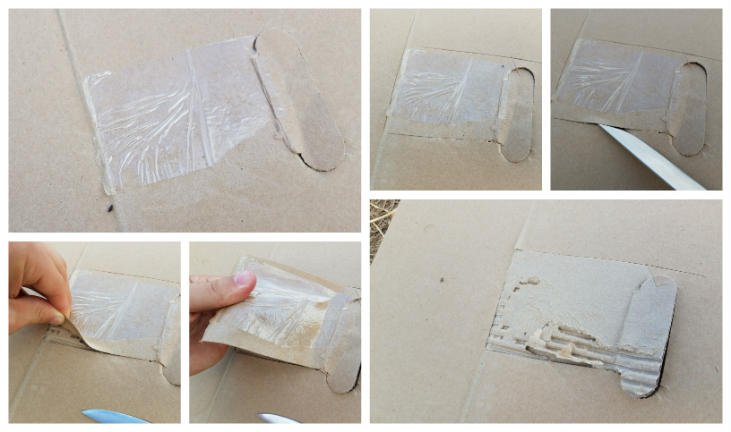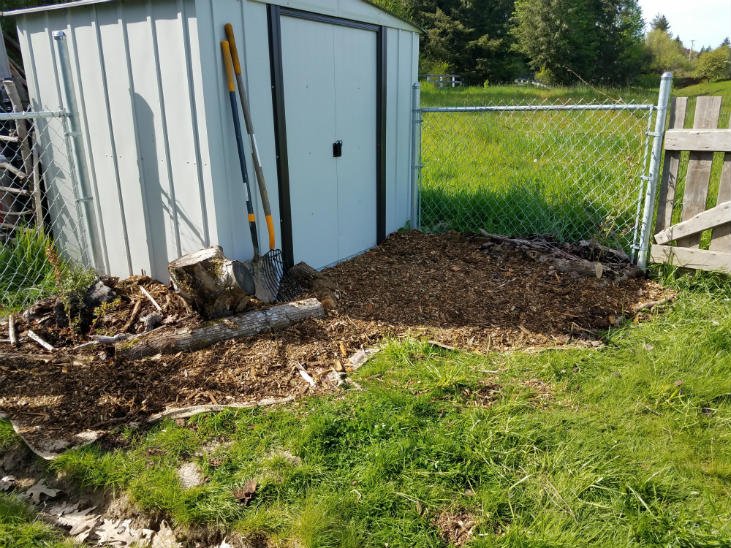
Have you heard about sheet mulching? Have you used it on your homestead? Sheet mulching really is one of those methods that is just awesome at shifting land from one state to another. Often this is from grass covered to good rich soil ready for planting all those perennial edible plants you dream of.
This week's blog post - How to Get Started with Sheet Mulching is all about the basics of sheet mulching. Specifically, what sheet mulching is and the pros and cons of 3 common types of sheet mulching.
The 3 Types of Sheet Mulching Covered in the Blog Post:
- Sheet mulching with cardboard
- Sheet mulching with burlap bags
- Sheet mulching with newspaper
Of course there are other materials that you could use (such as brown paper instead of newspaper) but in general these 3 materials are what most people seem use for sheet mulching.
So, do you use sheet mulching on your homestead? How do you use it? Leave a comment below with your answer!
Sheet Mulching with Cardboard

Let's dive into one of the 3 covered in the blog post - Sheet mulching with cardboard.
Cardboard is the material that I see people using the most. I think this is because it is relatively easy to find since it is a common waste product. But that does bring up some issues with cardboard.
- Cardboard can have a lot of tape and labels on it that can be time consuming to remove.
- Some of the dyes in cardboard can have toxins in them.
And of course sheet mulching in general takes a lot of material to cover any significant area. Finding enough cardboard despite it being relatively easy to find (compared to other materials) is a challenge.
But cardboard is still my go to material for sheet mulching.
I have found that it breaks down better than newspaper and seems to support more soil critters like earthworms than the other materials. But cardboard is also great at keeping grass and other plants from breaking through. But you do need to be careful to overlap the pieces of cardboard. I find it helps to push the grass or other vegetation down so it will start growing away from the nearest seem between 2 pieces of cardboard.
Overall, here are the pros and cons of using cardboard.
Pros:
- Generally easy to find, since it’s a common waste product.
- Breaks down within a year of being used for sheet mulching.
- Effective at suppressing grasses and other vegetation.
- Good for sheet mulching large, open areas.
Cons:
- Time consuming to remove tape, labels and staples.
- Dyed cardboard can contain heavy metals. Best not to use.
Bonus - How to Remove Tape from Cardboard

Tape on cardboard is annoying and sometimes I see people just put cardboard down with the tape still on so they don't have to try to remove it. But this just leaves tape in your soil to remove later. For a long time I would just pick at the tape and slowly peel it off. This works but is a pain...
Now I use a much quicker method. The above picture shows each step. First, I make quick slices around the edges of the tape using a sharp knife. Next, I use the knife to lift up the top layer of cardboard that the tape is attached to. Finally, I peel the thin top layer of cardboard and tape off as one piece.
Once you get the hang of it this method is easy and quick compared to most other options.
But I will also sometimes just let the cardboard get wet if I know it will then dry. Packing tape tends to just fall off if it goes through this process a couple times.
Get Started With Sheet Mulching

Sheet mulching worked great around my shed and the evergreen huckleberry I planted next to the shed. Ultimately I will use sheet mulch to remove all the grass around the shed.
Make sure to visit the blog post to get more information on sheet mulching and how to get started.
Sheet mulching is not easy but it is a great method for preparing land for planting without directly disturbing the soil. This is my go to method for preparing land for planting fruit trees, berries, etc. But I don't use this method to mulch my vegetable gardens (but it is a good way to prepare land for a future garden).
I would love to hear how you use sheet mulching on your homestead! Please leave a comment below on your experience with sheet mulching.
Thank you!

Weekly Blog Post
Follow me for more posts all about homesteading, working with nature, and growing your own food: @wildhomesteading
And check out my blog - www.wildhomesteading.com for weekly in-depth posts on working with nature to grow your own food and start/build your homestead.
Congratulations! Your post has been selected as a daily Steemit truffle! It is listed on rank 13 of all contributions awarded today. You can find the TOP DAILY TRUFFLE PICKS HERE.
I upvoted your contribution because to my mind your post is at least 3 SBD worth and should receive 123 votes. It's now up to the lovely Steemit community to make this come true.
I am
TrufflePig, an Artificial Intelligence Bot that helps minnows and content curators using Machine Learning. If you are curious how I select content, you can find an explanation here!Have a nice day and sincerely yours,

TrufflePigWe love using mulch sheeting! We were introduced to it by a video called Back To Eden that we saw several years ago and was so impressed with our results we even added mulch to our house plants, with great results!
https://www.backtoedenfilm.com/
I'm familiar with that video--thanks for sharing! Mulch tends to work great all around. I know I use a ton of it every year! Thanks for sharing!
Congratulations, your post has been selected to be included in my weekly Sustainability Curation Digest for the Minnow Support Project.
Thank you! :)